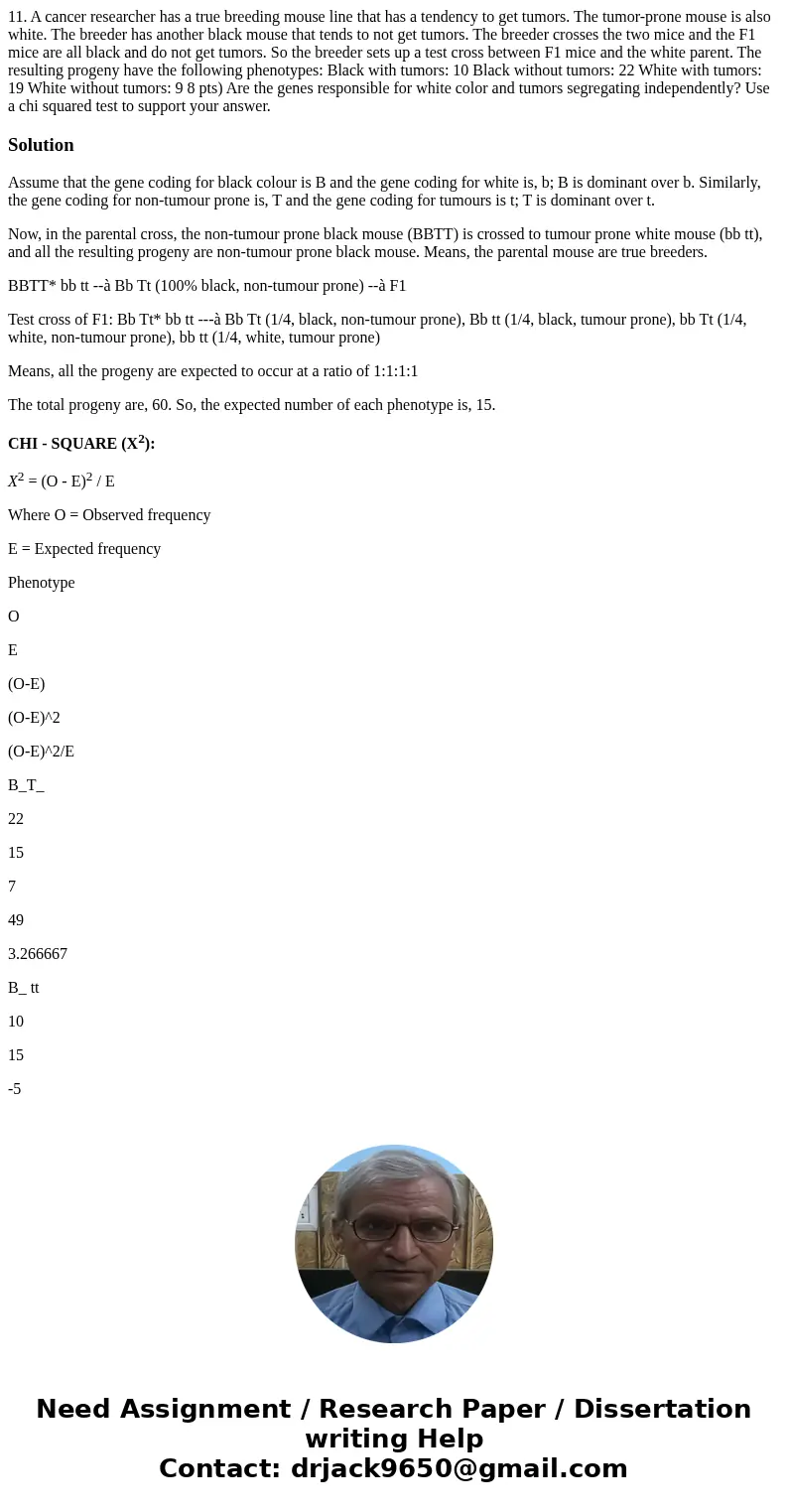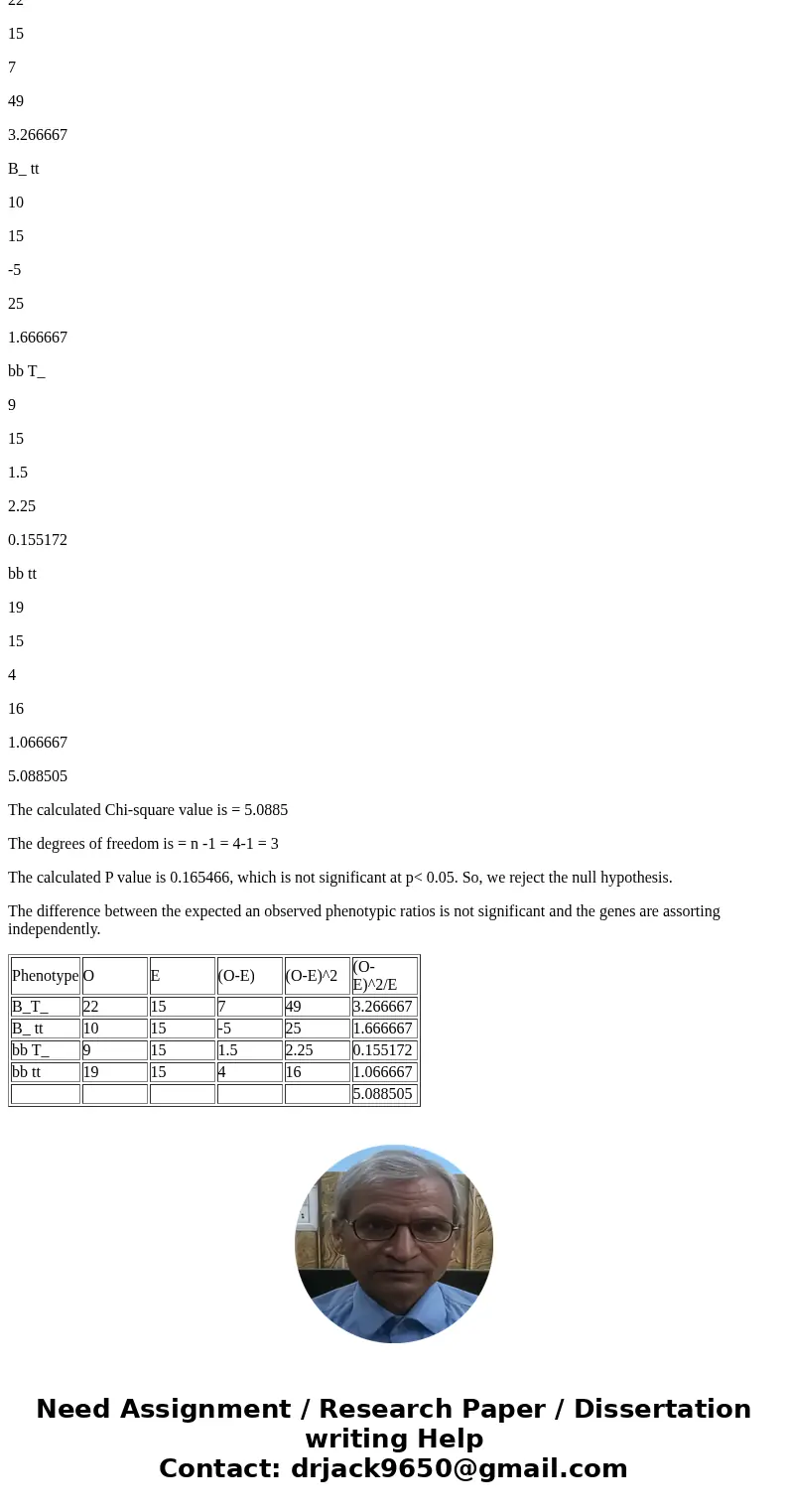11 A cancer researcher has a true breeding mouse line that h
Solution
Assume that the gene coding for black colour is B and the gene coding for white is, b; B is dominant over b. Similarly, the gene coding for non-tumour prone is, T and the gene coding for tumours is t; T is dominant over t.
Now, in the parental cross, the non-tumour prone black mouse (BBTT) is crossed to tumour prone white mouse (bb tt), and all the resulting progeny are non-tumour prone black mouse. Means, the parental mouse are true breeders.
BBTT* bb tt --à Bb Tt (100% black, non-tumour prone) --à F1
Test cross of F1: Bb Tt* bb tt ---à Bb Tt (1/4, black, non-tumour prone), Bb tt (1/4, black, tumour prone), bb Tt (1/4, white, non-tumour prone), bb tt (1/4, white, tumour prone)
Means, all the progeny are expected to occur at a ratio of 1:1:1:1
The total progeny are, 60. So, the expected number of each phenotype is, 15.
CHI - SQUARE (X2):
X2 = (O - E)2 / E
Where O = Observed frequency
E = Expected frequency
Phenotype
O
E
(O-E)
(O-E)^2
(O-E)^2/E
B_T_
22
15
7
49
3.266667
B_ tt
10
15
-5
25
1.666667
bb T_
9
15
1.5
2.25
0.155172
bb tt
19
15
4
16
1.066667
5.088505
The calculated Chi-square value is = 5.0885
The degrees of freedom is = n -1 = 4-1 = 3
The calculated P value is 0.165466, which is not significant at p< 0.05. So, we reject the null hypothesis.
The difference between the expected an observed phenotypic ratios is not significant and the genes are assorting independently.
| Phenotype | O | E | (O-E) | (O-E)^2 | (O-E)^2/E |
| B_T_ | 22 | 15 | 7 | 49 | 3.266667 |
| B_ tt | 10 | 15 | -5 | 25 | 1.666667 |
| bb T_ | 9 | 15 | 1.5 | 2.25 | 0.155172 |
| bb tt | 19 | 15 | 4 | 16 | 1.066667 |
| 5.088505 |


 Homework Sourse
Homework Sourse